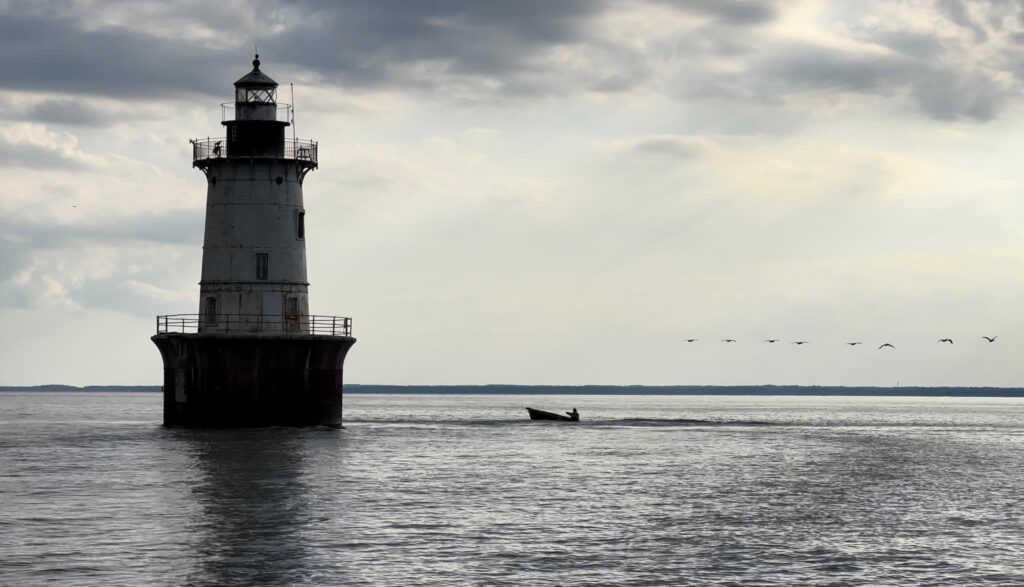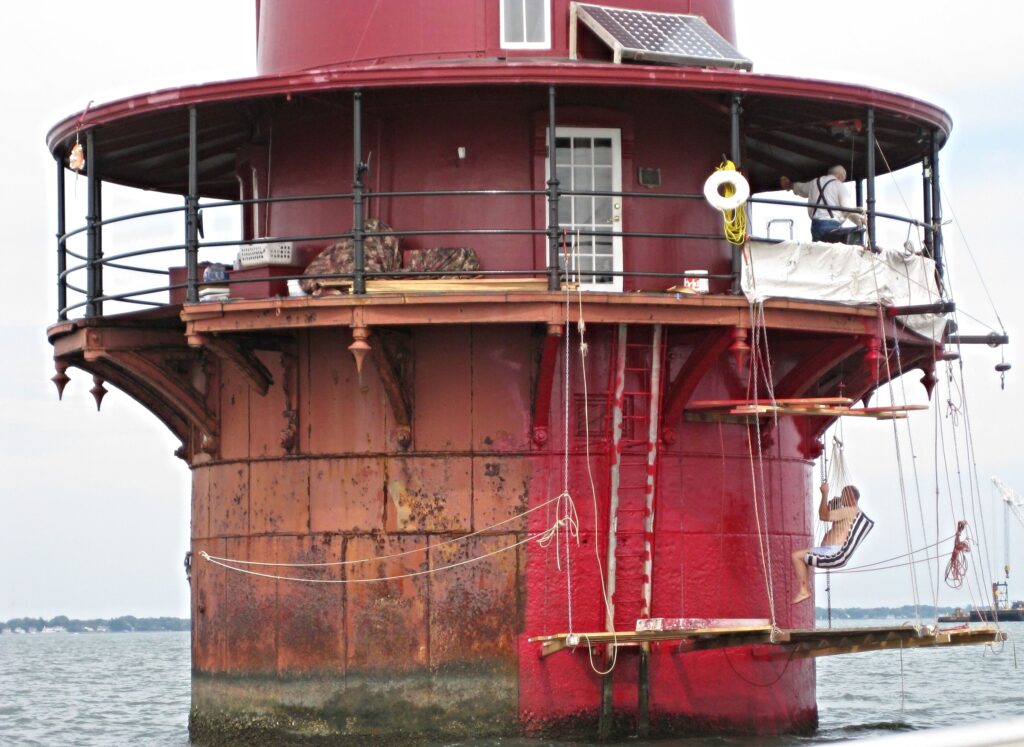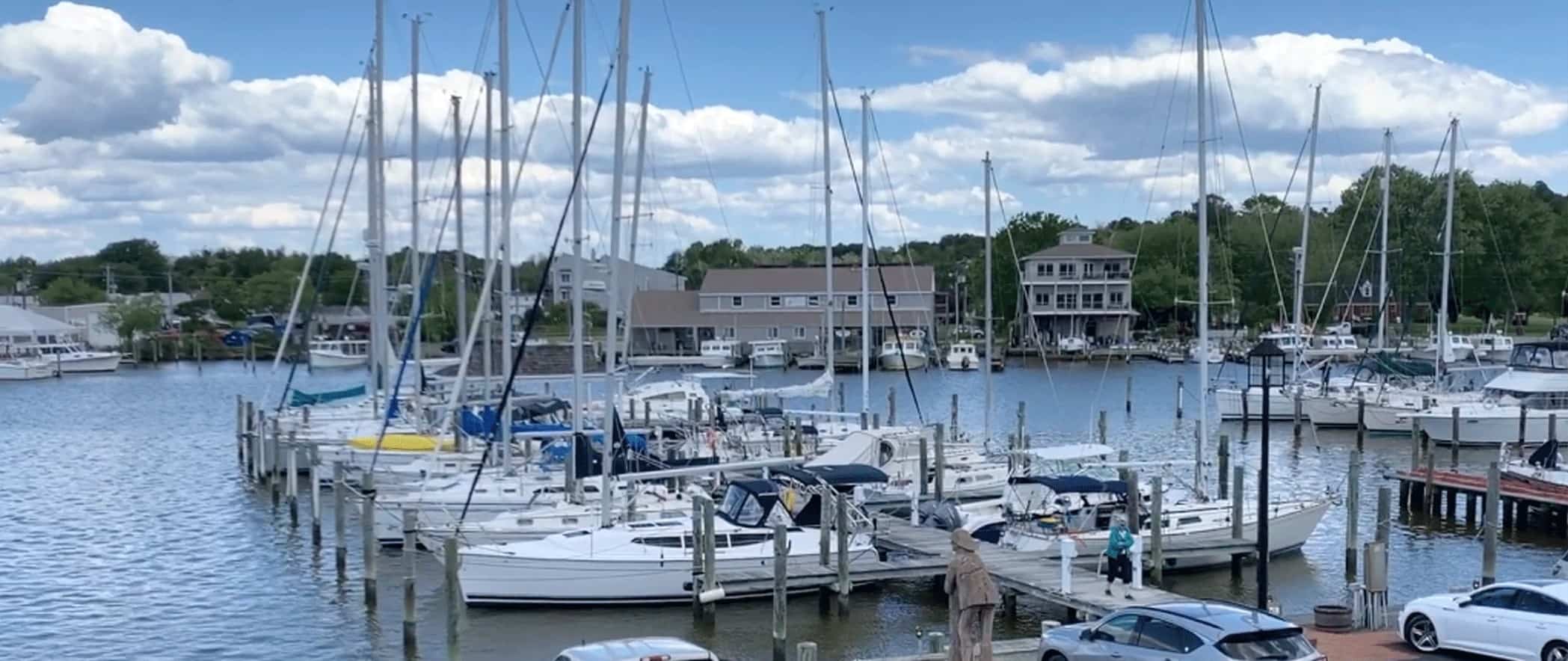They’re romantic, but not what you’d call glamorous. Acknowledged fixer-uppers, they’re still nightmares, invariably rust riddled, pooped on, neglected, and lacking basic amenities like electricity, running water, heat or toilets—unless you consider an antique outhouse perched tens of feet above water level a suitable restroom. (Hint: Health officials do not.)
Chesapeake Bay’s Coast Guard-forsaken lighthouses appeal to a certain type of buyer, someone, as one owner puts it, “with more money than sense.”
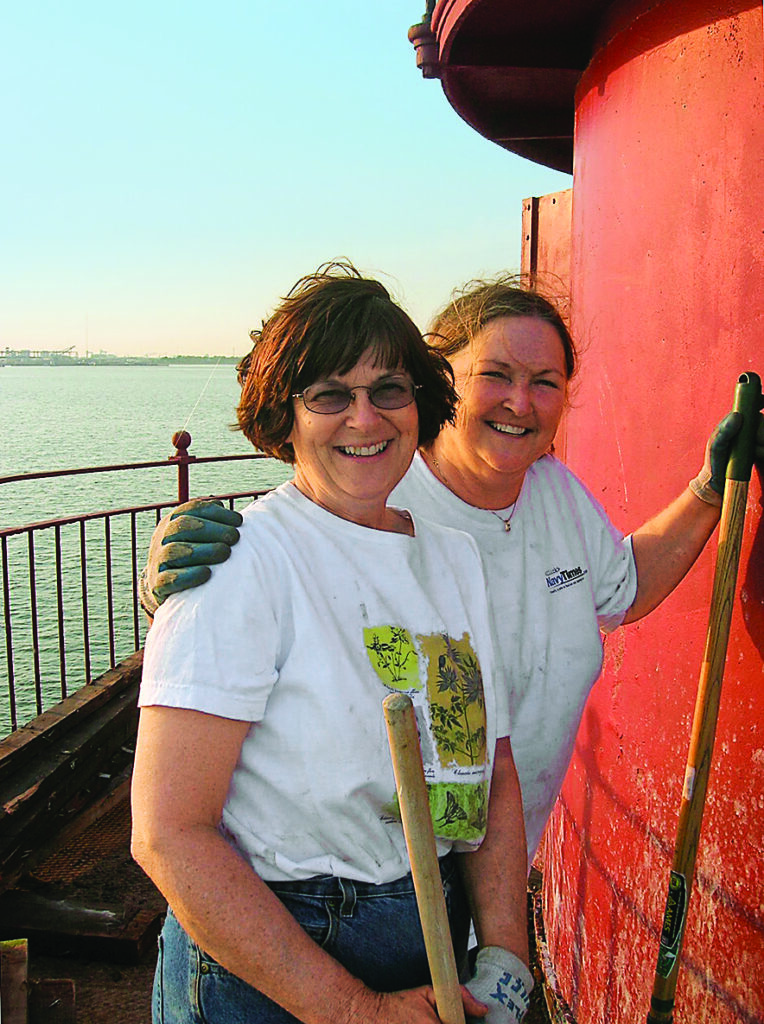
Since the passage in 2000 of the National Historic Lighthouse Preservation Act (NHLPA), the federal government has given away (to governments or nonprofits) or sold (to private citizens) about 150 lighthouses across the United States and its territories, including 13 on the Bay. Many remain aids to navigation. Declared excess property by the Coast Guard, which can no longer afford to maintain the structures, neglected lights await new stewards willing to roll up their sleeves and hold their noses to save cherished maritime relics. It’s not work for the squeamish.
When Dan and Jackie Billingsley of Annapolis, and Bob and Joan Gonsoulin of Williamsburg, Virginia, began restoring Newport News Middle Ground Light 17 years ago, they had to tiptoe around missing or dangerously rusted decking, remove 100 gallons of putrid liquids left behind by seagulls and storms (among other nasty tasks) and spend about $181,000 painting and remodeling their corroded, caisson-style tower. Today, the couples and their families enjoy enviable waterfront living, spending summers grilling, swimming, and relaxing in a House Beautiful-worthy retreat with 360-degree views of historic Hampton Roads.
“This thing was going to wrack and ruin since it was abandoned,” (about 40 years ago) Dan Billingsley says. “In my view, this is the poster child for the National Historic Lighthouse Preservation Act. The vision was that if [the government] could turn this over to somebody who was willing to put money into preserving this thing”—and labor, his wife adds—”then it would, in fact, be preserved as a national landmark.”
Middle Ground was among the initial round of Bay lighthouses the feds conveyed to new owners from 2004 to 2009 under terms of the preservation act. Four went to governments or nonprofits—the feds’ preferred caretakers—beginning with the Chesapeake’s iconic Thomas Point Shoal Light in 2004. Eight were auctioned online after no governments or nonprofits expressed interest. Only three have changed hands since 2009, two of them for the second or third time.
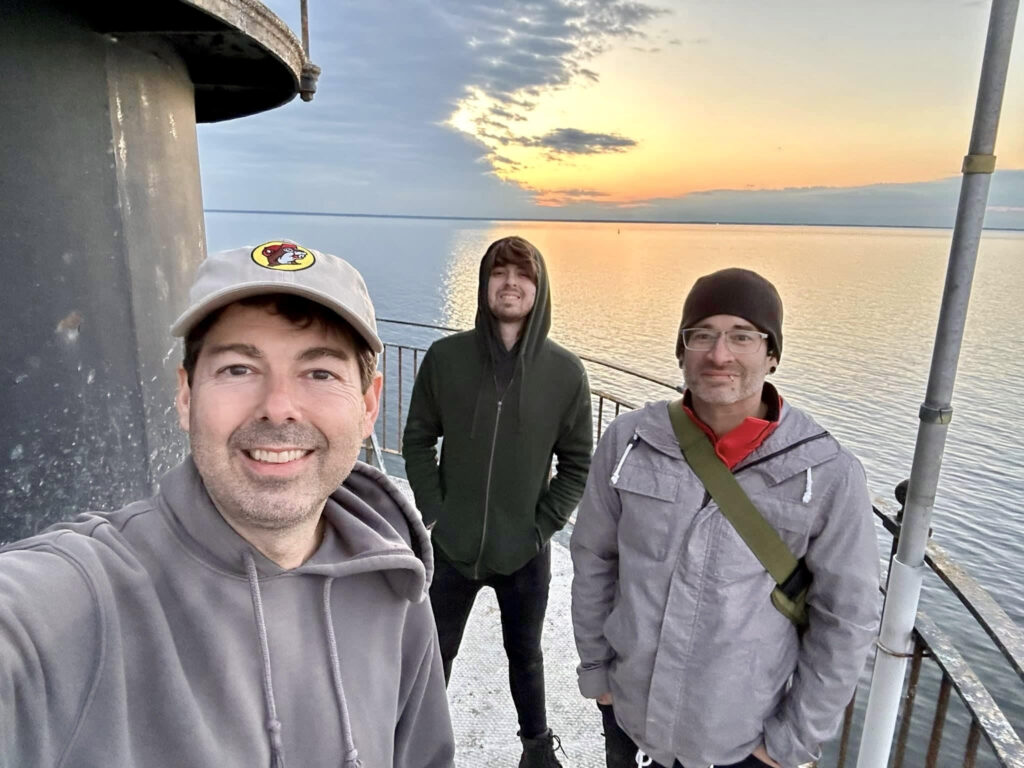
In the past year, a Pennsylvania man purchased three lighthouses he is working to renovate, the first individual to attempt such a formidable task in the Chesapeake. Richard Cucé of Quakertown jumped in to buy Hooper Island Light in late 2022 and Wolf Trap Light in early 2023 after previous owners were unable to restore them. In early 2024, Cucé purchased Craighill Channel Lower Range Front Light just outside Baltimore, close to the spot where the container ship Ever Forward ran aground.
Told he’s the first to tackle a Chesapeake rehab three-fer, Cucé laughs: “Maybe it’s because it’s a bad idea!” He doesn’t really believe that. He’s confident his nearly 30 years in commercial painting and paint removal—he owns Blastco, an industrial painting and sandblasting business—has prepared him. And if enthusiasm is a valuable resource, Cucé has it in spades. He envisions forming a nonprofit to underwrite his efforts, has begun work on Hooper Island and sized up what he needs to do at Wolf Trap, which the Coast Guard deemed too hazardous to access. (They deactivated the light, replacing it with a green flashing buoy.)
“This is the most fun you can have while working—I should say adventure,” Cucé says, correcting himself, “because it’s not always fun. It’s a roller coaster of emotions,” he adds. “It’s neat in doses. It’s so quiet and so peaceful out there.”
By last fall, he was spending several days a week, weather permitting, at Hooper Island Light, often sleeping over to maximize his worktime. Of Wolf Trap, he concedes, understatedly, “it’s a little dangerous.” Yet he’s determined: “We purchased an adventure, but we’re doing a good thing.”
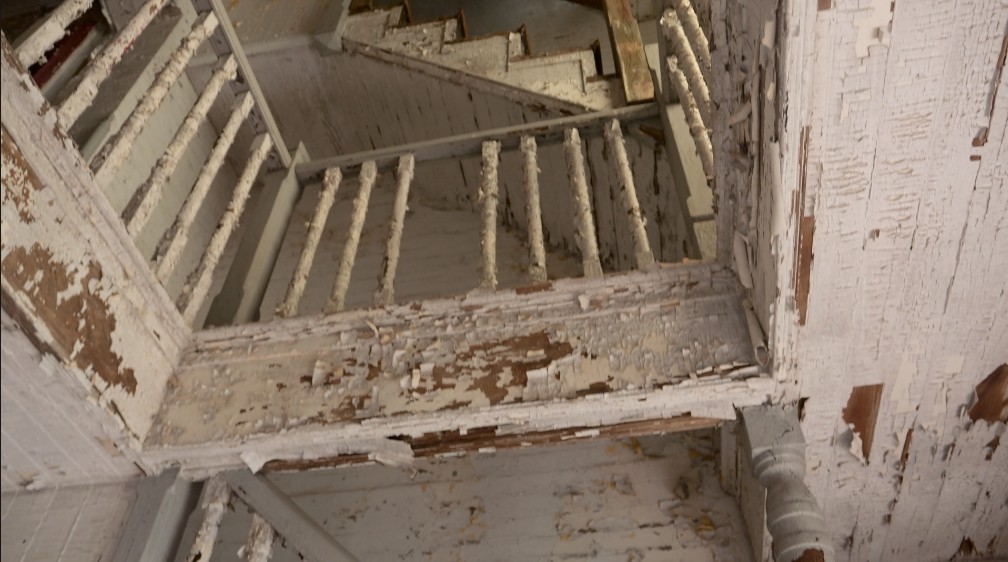
Other owners have echoed the same conviction over the years. Some, such as the Billingsleys and the Gonsoulins, accomplished their goals, albeit not easily. Others fell short, including—of all entities—the Chesapeake Chapter of the U.S. Lighthouse Society, a nonprofit devoted to saving beacons. After 10 years, the group gave Hooper Island Light back to the government in 2019. Three years later, the government’s used-lighthouses broker, the General Services Administration (GSA), held an auction that sparked an unexpected bidding war. Cucé won, offering $192,000 for the 1902 cast-iron beacon.
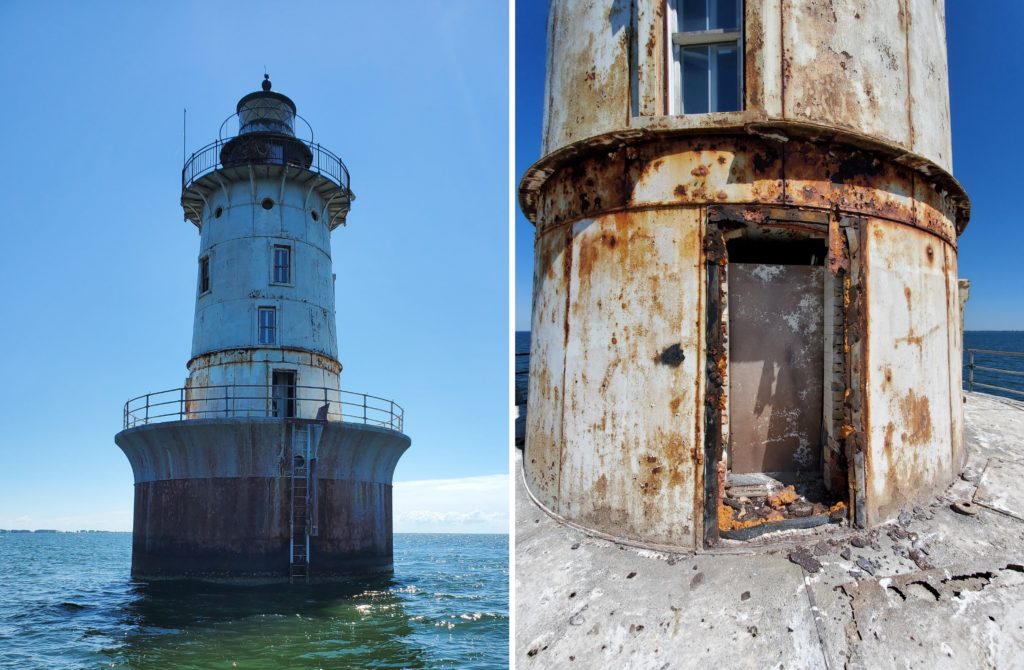
“I thought it would go for sixty to a hundred [thousand],” he says. “But you can’t put a price on something so unique.” He estimates it will take $950,000 to repair and upgrade the structure the way he envisions, including installing a dock, facilities for cooking, showering and sleeping, and, ultimately, transforming it into an educational/environmental research station accessible to the public. “Restore the Lighthouse, Restore the Bay,” is his slogan. He plans similar work at Wolf Trap—an estimated $1.1 million project—beginning with new windows and doors. The old ones are completely gone.
“This is with me working unpaid, full-time, for two to three years,” says Cucé, who’s accompanied by three or four co-workers. “So far, I am using my personal funds, but that will run out. I will have to get loans or do some serious fundraising to complete the project.” He’s set up a website with YouTube videos, thelighthousecenters.org, to help.
The Lighthouse Society’s Chesapeake Chapter takes no official stance on private ownership of lighthouses. Some members are concerned that infatuated new owners will tire of their hard-to-access purchases, leaving the lights as forlorn as ever. The Achilles heel of this well-intentioned new breed of keepers is lack of resources—monetary or human or both. Some had grand plans for their purchases—as lighthouse museums, weekend retreats, even a B&B—that sputtered as their interest waned or reality set in.
“It’s tough because the track record is not what you’d call in the positive column,” says chapter Vice President Greg Krawczyk. “The personal opinion of many of us is that it’s better that somebody try than to have it sit there and be abandoned. The preference is always to [have it transferred to] a nonprofit, but there’s just not enough nonprofits around. Sale by GSA is a realistic option.”
Krawczyk says his chapter couldn’t make a go of it at Hooper Island for lack of volunteer help. “It was our attempt to reach out and get volunteers from the Eastern Shore interested,” he says. “Within nine months, it was just Western Shore preservation people doing the work.” Given the distance they had to travel per trip and the Bay’s fickle weather, “We were lucky to get a half a day’s work done.”
Krawczyk wishes Cucé well. “I’m just hoping he’s got deep pockets. In a lot of cases, they underestimate the cost of getting out there and the challenge of cleaning it up.”
For a 2008 Chesapeake Bay Magazine article, I interviewed the owners of eight Bay lighthouses conveyed under the NHLPA. While all but one remain in the same hands today, several are still being renovated and work on at least two has ground to a halt or never started. I caught up with several owners to hear the triumphs and tribulations of 21st-century lighthouse keeping.
“You would have to say we are project people—to an afflicted degree,” says Dan Billingsley. He and his wife built their Annapolis home—by themselves—40 years ago with the help of Jackie’s carpenter father, Eddie Prokop. The couple also owned, cruised, and maintained a Beneteau 473 for several years. They know big projects.
It was Jackie’s uber-enthusiastic brother-in-law, Bob Gonsoulin, who sweet-talked the group into buying a dilapidated 1891 Virginia lighthouse for $31,000 in 2005. (It remains the lowest price paid for a Bay beacon.) “Joan was hoping we would say no,” Jackie says of her older sister, Bob Gonsoulin’s wife.
They faced a Herculean to-do list: replace 30 feet of missing decking and about 80 percent of the lighthouse’s railings, clean up decades of seagull detritus (guano, eggs, fish remains), remove lead-based paint from the interior, install a generator, and wire the place for electricity, not to mention haul large metal sheets and a 750-pound generator out to and then up their fixer-upper. The entire iron exterior also had to be painted, which entailed MacGyvering a scaffold above 17 feet of water without a solid seabed on which to place it.
Fortunately, their immediate families are large and include 11 engineers experienced in problem-solving. “That was the nature of the entire lighthouse project,” Dan Billingsley says. “It was kind of an invention convention. We also divided up the work. If it was painting, then Bob was the lead, and all the rest of us were labor. And if it was carpentry, then Jackie was the lead, and all the rest of us were labor. If it was electrical wiring or welding, then I was the lead. If it had to do with making things look nice, then Joan was the lead.”
They were aided by their offspring’s college-age friends—“it’s amazing what college kids will do for beer,” Dan says—and Bob’s let’s-do-this! brio. “He’s such a hard worker,” Dan says. “Put a paint gun in his hand and nothing is safe. I’ve been on the lighthouse when he was painting. I wasn’t directly involved, and I’d still end up with paint on my underwear.”
Jackie and her 80-something father (who has since passed away) built most of the furnishings, including a large kitchen table made from cypress wood salvaged from a lighthouse balcony. “She and her dad built 19 different pieces of furniture to specific radiuses for specific places,” Dan marvels. Joan Gonsoulin supervised interior design, including marine-themed murals hand-painted by another sister, Elaine.
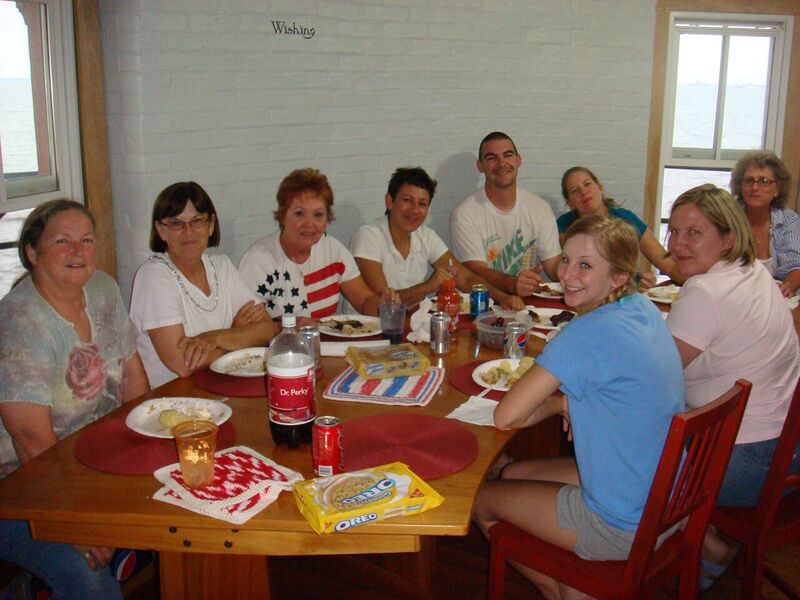
The renovation took about five years, but with livability as their initial focus, the families were able to host an open lighthouse party within the first year. Now that the heavy lifting is done—only two outside contractors were hired during the rehab—family projects involve routine maintenance and winterizing the lighthouse. “It’s like owning a boat,” Jackie says, “you either write checks or you do it yourself.”
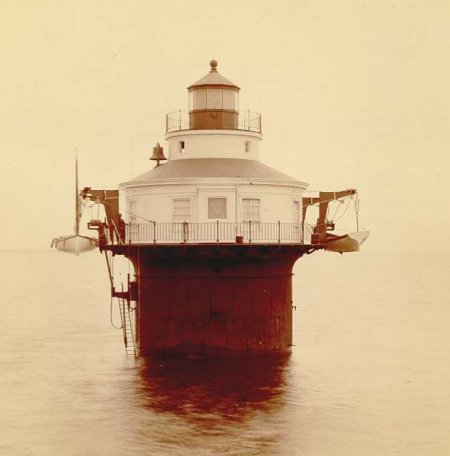
Cathy Taylor’s effort to rescue Craighill Channel Lower Range Front Light in the Patapsco River was also a family affair. I got to visit the nation’s second oldest caisson lighthouse when Taylor was in the early stages of her nonprofit’s quest to restore the beacon, completed in 1875. (Lighthouses qualify for the NHLPA only if they are on, or eligible for, the National Register of Historic Places.)
When Taylor’s group got custody in 2006, Craighill Channel Light’s rusted iron shell hadn’t been painted in decades. Inside was far worse, as I wrote:
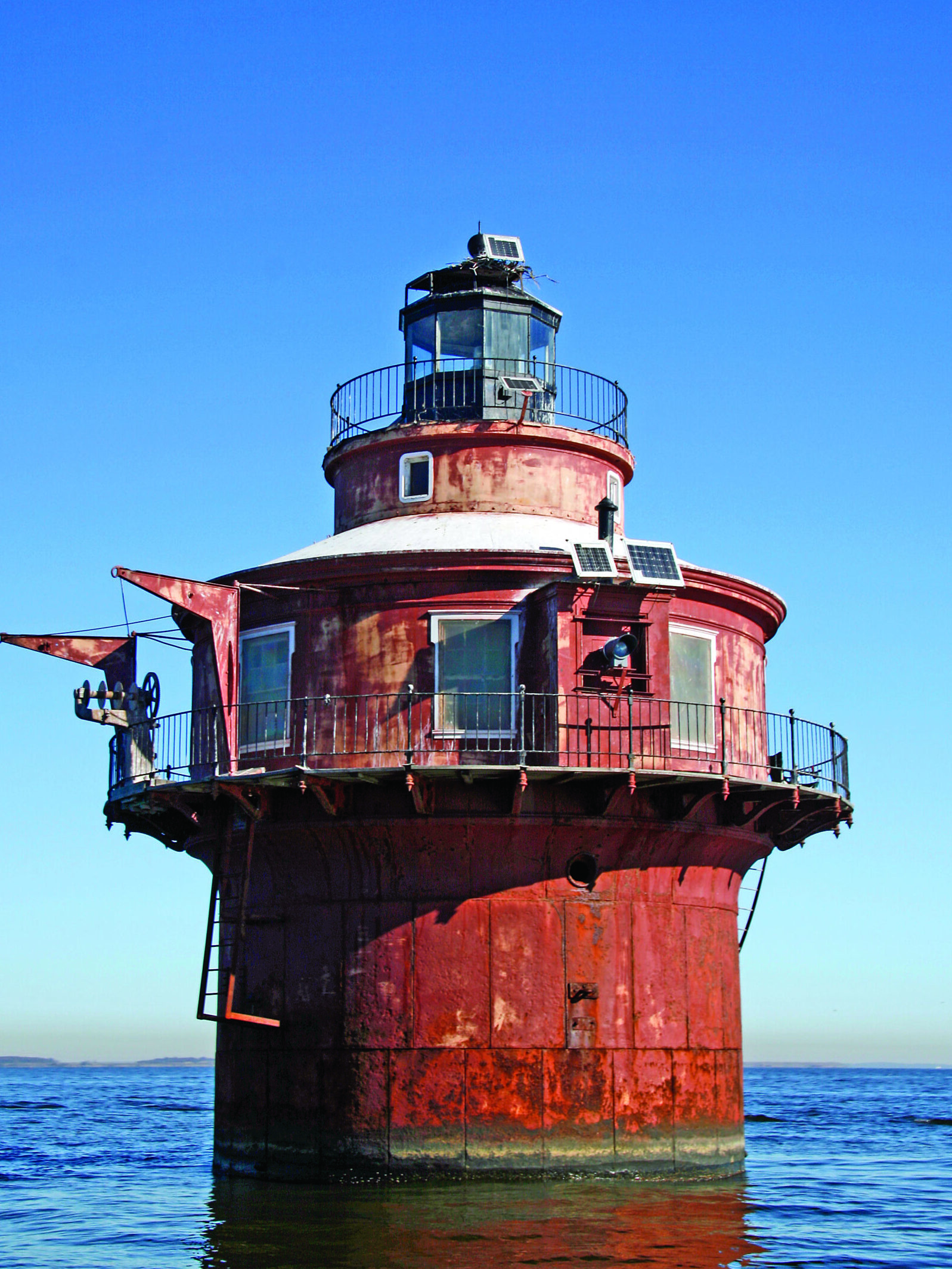
“The decks and railings are nearly whitewashed with bird droppings. In the vacant living quarters, palm-size flakes of white, lead-based paint blister off the walls. Rainwater has rotted ceiling boards on the second floor watchroom. Hanging lopsidedly in the cellar, a now-powerless electrical box hints that someone once lived and labored here, and that we are traipsing through more than a century of maritime history.”
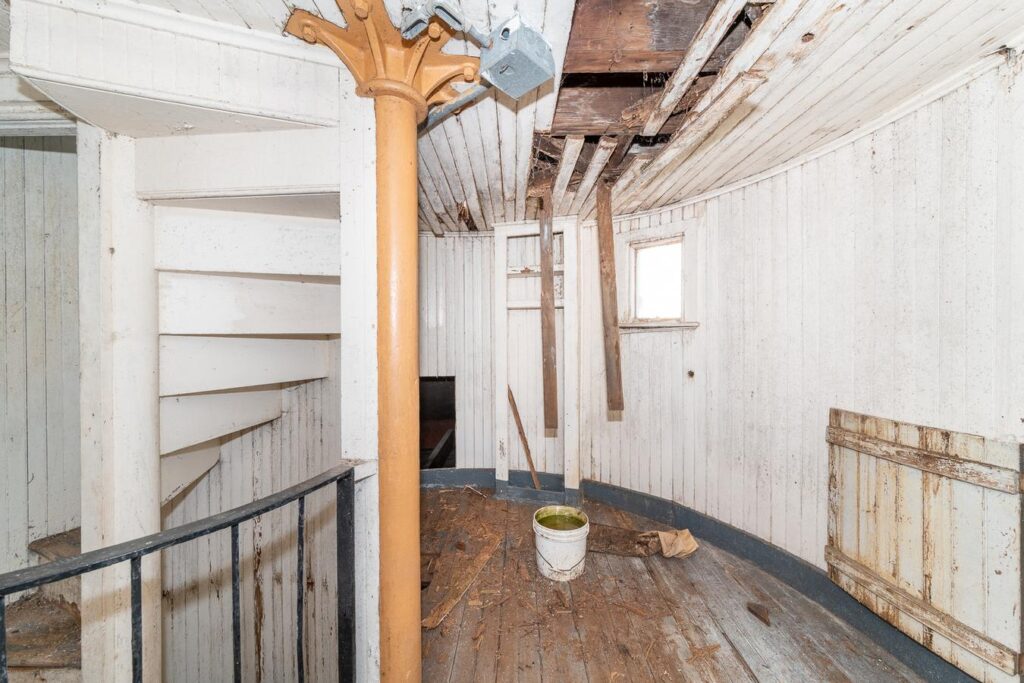
Despite working visits with her husband and two young children, plus the Taylors’ own financial contributions, Historical Place Preservation Inc. was unable to muster $500,000 to preserve the lighthouse. Taylor’s group lost its nonprofit status after the family exceeded legal limits on personal donations. The federal government took back the lighthouse. In 2018, GSA sold it for $96,000 to an undisclosed buyer. (Krawczyk of the Lighthouse Society, who regularly cruises past Craighill, says no work appears to have been done since the sale.) In March of 2024, just prior to the collapse of the Francis Scott Key Bridge, Richard Cucé purchased the lighthouse for $96,000.
If the poster child for private ownership is Middle Ground Light, Thomas Point Shoal Lighthouse is the crown jewel of public stewardship. The Chesapeake’s only remaining in situ screwpile lighthouse—a beacon so beloved it’s been on a U.S. postage stamp and included in a Jimmy Buffett music video—was destined for dismantling when public protest forced the Coast Guard to reverse course. In 2004, the federal government surrendered the keys to the city of Annapolis, which owns the light in partnership with the Lighthouse Society’s Chesapeake Chapter, the Annapolis Maritime Museum and Anne Arundel County.
As manager, the Lighthouse Society oversees the dirty work. Major projects in 2020 ($400,000) and 2023 ($157,000) replaced rusted and rotted structural supports, removed up to 18 layers of lead paint, patched the roof, eradicated ships worms and generally made the lighthouse presentable and safe for visitors. Once a month from April to October, work crews (mostly volunteers) repair and maintain the place.
“We estimate that between 2004 and now we’ve spent $1.5 million on maintenance,” says John Potvin, lighthouse manager and director of preservation. Public tours (which invariably sell out each season) help underwrite the work.
On a warm summer afternoon, the 1875 lighthouse attracts paying and non-paying admirers. As intrigued boaters idle past, our tour group wanders through the hexagonal keeper’s cottage, exactingly restored to its vintage lives, from a circa 1900s parlor to the 1986 radio room where the last Coast Guard crew worked.
The Lighthouse Society was fortunate that Thomas Point had a dock, where tour boats tie up for guided visits from June to October. Not so at most beacons. Aside from deep pockets or donors on speed dial, a lighthouse owner’s next-best asset is a dependable boat (or two).
Taylor wrecked her first, a cabin cruiser, when a swell bashed it against Craighill’s platform. She replaced it with a less brittle 17-foot inflatable. “It may be a bay, but conditions can become ocean-like and dangerous very quickly,” says Taylor, who preaches safety. “I really worry when I read articles about new lighthouse owners who have no marine experience.”
The Billingsleys and Gonsoulins are on their third lighthouse tender, a 25-foot aluminum boat (a.k.a. “The Tank”) built for the Coast Guard in the 1960s. (A pontoon boat fortunately lasted long enough to haul all their bulky materials.) Cucé relied on local watermen before buying his 25-foot Parker.
Though less harrowing than tales of lighthouse keepers of old, current owners have adventures to share. For example, Cucé gingerly rescued a scared-stiff peregrine falcon trapped in his lantern room. And Middle Ground Light’s owners rode out Tropical Storm Isaiah there in 2020—gung-ho Bob Gonsoulin’s idea.
“Half of your brain knew that the lighthouse has survived every hurricane that’s come up the Bay,” Jackie Billingsley recalls. “The other half of your brain is like, ‘What am I doing out here!?’” Portholes on the level where they slept howled all night. “About three a.m. the whole thing started to kind of quiver,” Dan Billingsley says. The beacon’s weather station recorded an 85-mph gust, but lighthouse and occupants were fine.
Lighthouse ownership left the Taylors a personal legacy. When I visited Craighill Light, Cathy’s son Tyler was 10 years old. He’s 25 today, with a young child of his own. He’s working towards his captain’s license and last summer took a boat from Florida to New England, making a detour en route.
“He went up the Chesapeake just to pass the lighthouse and send me pictures,” his mother says.
Maryland native and award-winning contributor Marty LeGrand writes about nature, the environment and Chesapeake history.

